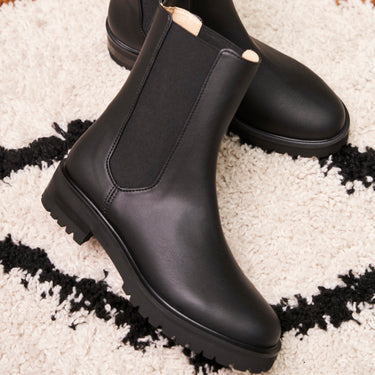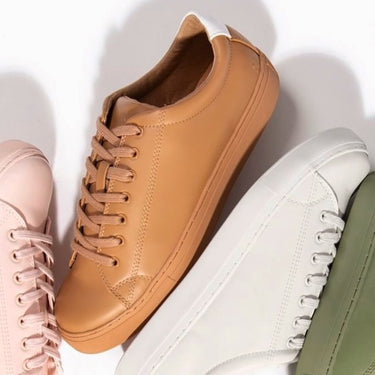Why Pre-Loved Fashion Deserves a Place in Your Wardrobe
Second-hand fashion has had an image overhaul: from an untrendy niche that lived far away from the fashion magazine's glossy pages, thrifted style has now found its place in the wardrobes of some of the industry's most influential people and is widely celebrated as the most planet-friendly choice.
By Sascha Camilli: writer, speaker, activist, and vegan fashion expert.
This shift came courtesy of fashion waking up to the current climate emergency. It is undoubtedly true that second-hand style is close to being the best wardrobe choice we can make when it comes to environmental sustainability. Using resources that are already in circulation is without a doubt preferable to shopping any kind of new clothing, and every time we are giving a piece of clothing a new lease of life, we are doing the planet a favour.
And it's easy to see what spurred this on. Over the last few decades, fashion has gotten faster and faster. There used to be two main fashion seasons – autumn/winter and spring/summer. Today, fashion brands sell cruise collections, showcase couture shows, and offer limited editions, collaborations, and so much more. Fast-fashion brands often release as many as 50 collections per year, with one launching almost weekly.
Fuelled by social media, the craze for constantly wearing new things has resulted in an avalanche of overproduction: we now produce an eye-watering 150 billion new articles of clothing every year. An average fast-fashion consumer will only wear an item five times before discarding it, and throw away 37kg of clothing every year. In the US alone, 85% of textile waste either ends up in landfill or is incinerated.
As more fashion consumers wake up to this dire reality, second-hand style is rising. A study by waste management agency Business Waste has found that almost half of the respondents (45%) currently owned second-hand clothing. A 2020 report from ThredUp found that the second-hand fashion market will be bigger than fast fashion by 2029. This is a welcome development, pre-loved clothing helps slow down the cycle of constant production, as well as helps halt textile waste.
Frequently (although not always!) second-hand shopping is also local shopping – when buying online, sellers will often live in your country, meaning that the greenhouse-gas emissions resulting from transport are cut. And lastly, refraining from buying any newly produced animal-derived clothing or accessories also means helping save the lives of the millions of animals tormented and killed for leather and fur.
My own experience with second-hand fashion has been transformative to say the least. When I first learned about sustainable fashion, I was faced with the dilemma of its high cost. Despite understanding why ethical fashion had to cost more, I still couldn't escape the fact that this meant I could not afford it. So I was stuck wearing things I didn't ethically stand for and that didn't represent my values – until I found out that charity shops existed. Excited, I visited...and found nothing I liked. So, I decided second-hand fashion was not for me and went on shopping like I used to and feeling guilty about it.
Until I moved to a new area of London and was prompted to give my local charity-shop scene another try. And guess what – I found an amazing dress for a fraction of the price it would have cost in a shop. I was hooked. I returned to that charity shop more frequently, and also discovered others. I downloaded second-hand shopping apps on my phone and slowly but surely, I got to the stage where most of my wardrobe was pre-loved.
Friends of mine agree. “Watching Netflix documentary The True Cost opened my eyes to the damage fashion does to the environment and humans,” says Maria, 34, who often shops second hand. “I love finding pre-loved gems that I might not otherwise have come across.” Amy, 37, echoes that sentiment: “It's the surprise element of it – you never know what you will come across. I love shopping second hand.”
And that's the magic of pre-loved shopping: not only is it great for the planet, but, done the right way, it can also be the most fun you've ever had shopping. Which is also why we've just launched Immaculate Preloved – the place where you can buy and sell Preloved clothing bought from Immaculate Vegan and also a selected list of premium vegan brands. Try it now – you won't regret it.
By Sascha Camilli
About Sascha
Sascha Camilli is a vegan fashion writer, speaker and activist. Her book Vegan Style is out now on Murdoch Books. For more about Sascha, you can read our interview with her. You can also follow her on Instagram, Twitter and LinkedIn.
Cover image by Charlesdeluvio via Unsplash
For more great content like this in your inbox, sign up to our newsletter, and save 10% off your next purchase, plus great savings throughout the year.
































































